"Mechanical" rennen and other games. Vienna Armory
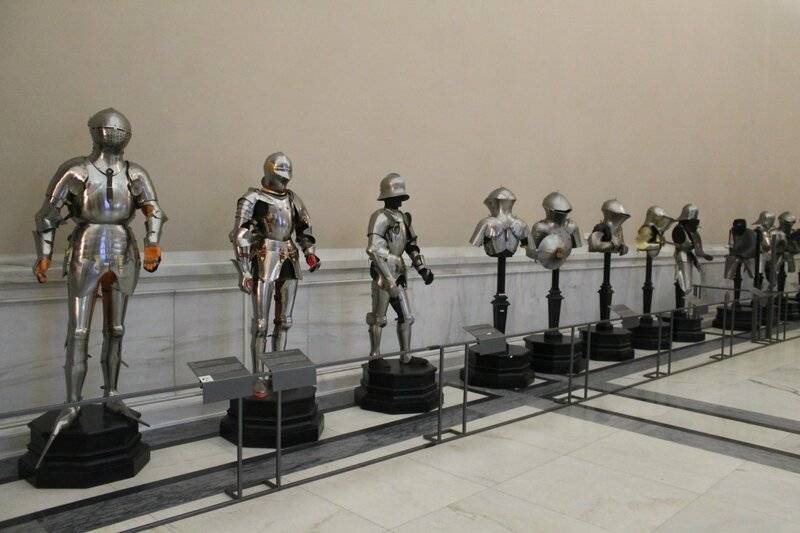
Two levers, which were under the tarch, pushed him up with force, and the tarch, as well as the wedges holding it, scattered in different directions. The calculation at the same time was for the audience to see with their own eyes the result of the hit and the “power of the blow”, which would certainly increase the entertainment of the performance. Again, Emperor Maximilian I was a big lover of such a game. He was very amused, as from his strong blow, tarch fragments soared high into the air. Moreover, if the rider participating in this tournament could not "sit out" the blow, that is, fell out of the saddle, then he was suspended from further participation in the tournament.
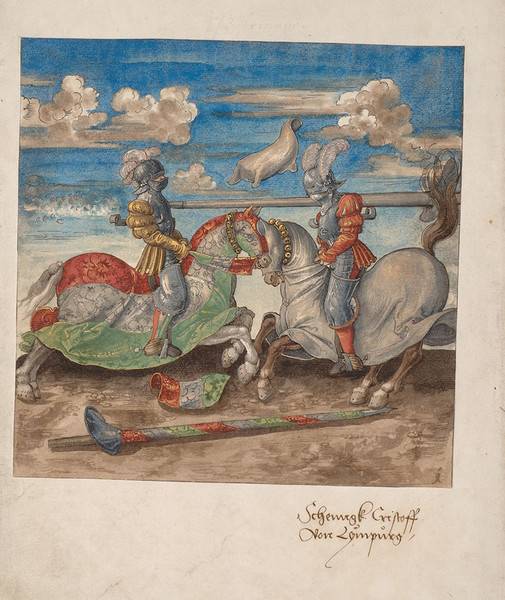
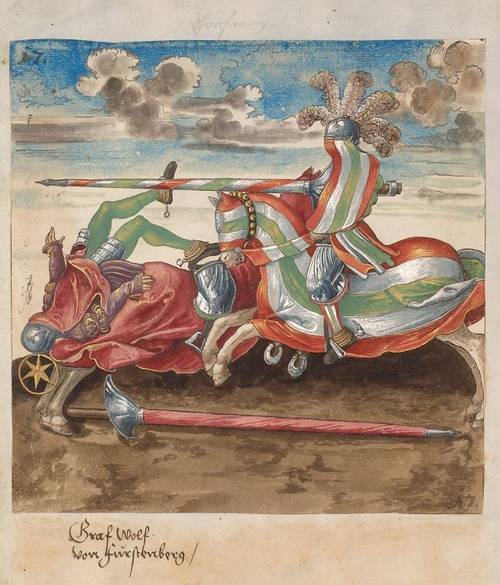
Another type of rennen was the "exact" rennen. The rider participating in it wore a rennzeug. Leggings or bracers were almost never used. Shaffron - deaf, without inspection holes. The horse was covered with leather blanket and a cape of bright fabric. Accurate rennen was called because the collisions were carried out at full gallop, that is, the horses rushed towards each other very quickly and considerable skill was required in order to get into the enemy’s tarch.
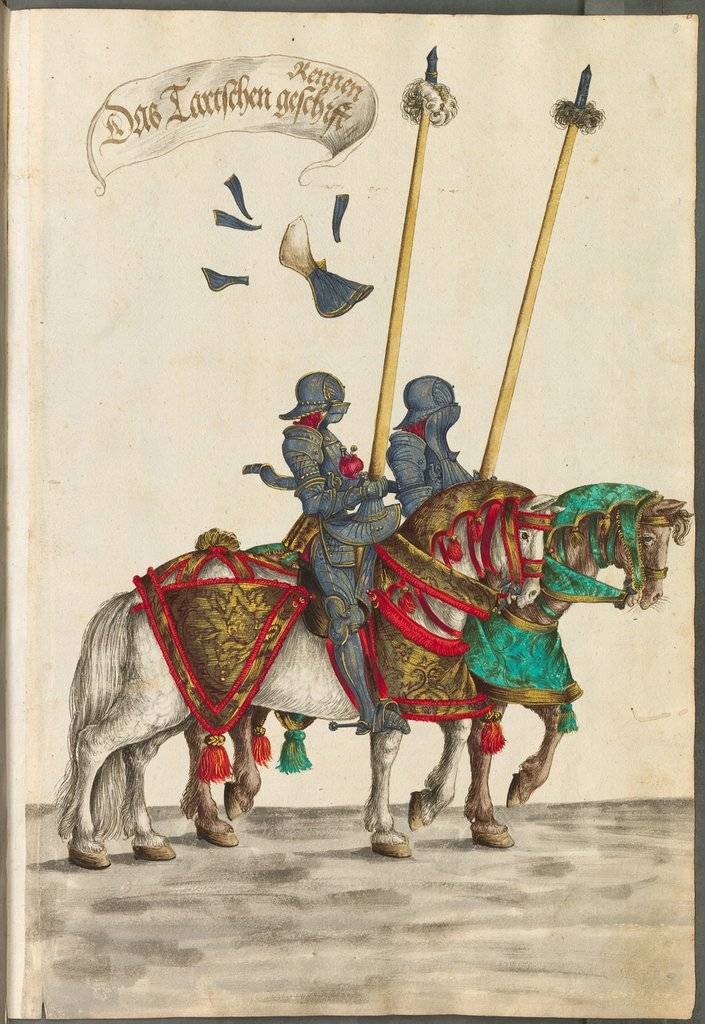
However, getting into it was still half the battle. It was necessary to knock the tarch out of the grabs that held him on the cuirass. And if the tharch fell to the ground, its owner was considered defeated. As a rule, armor for the legs was not provided for in this type of tournament; enough of the djelgos were enough.
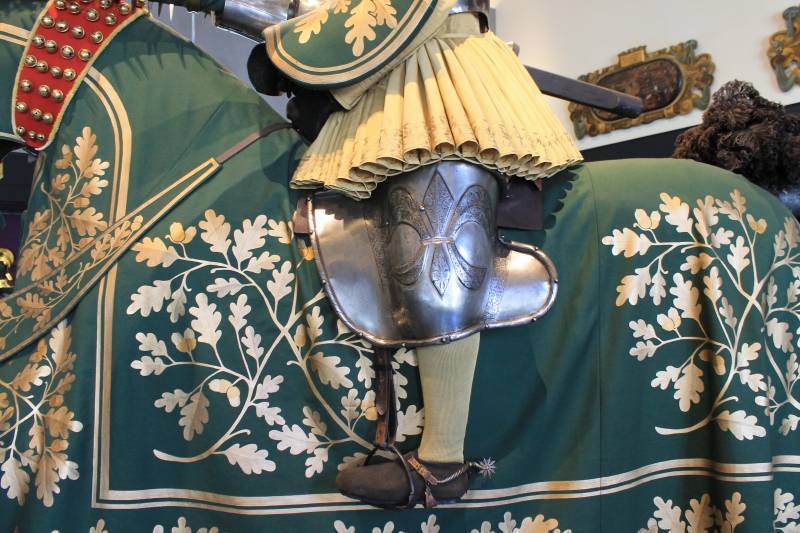
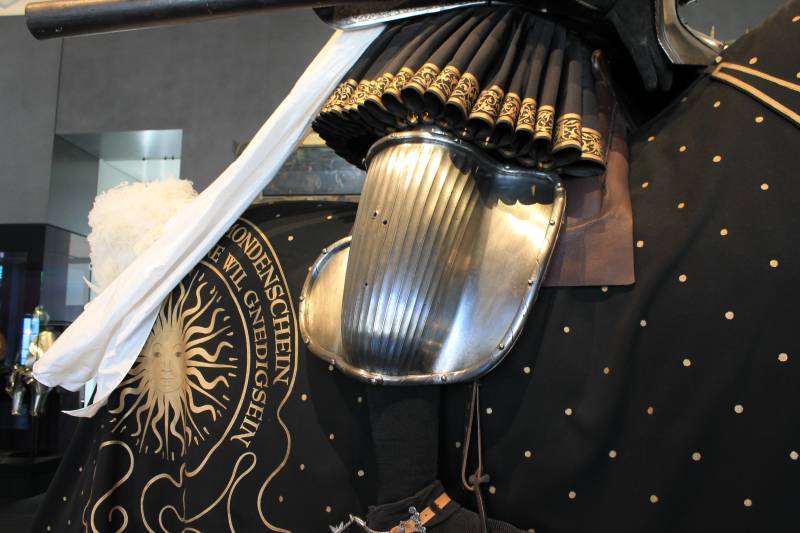
But the most dangerous kind of "mechanical" rennen was considered its other form - the Bundrennn. To participate in it, the rennzeug was equipped with a special bib, which was called the Bund. A mechanism was installed on it, arranged so that when the enemy’s spear was successfully hit in the tarch, it threw it up, and it flew high up above the fighter’s head. And not only did it take off, it also scattered into many segments. But since the rider did not have a chin under this tarch, any inaccuracy in the assembly of the mechanism or its operation led to mortal danger. To ensure all this, two guides were mounted on the cuirass, which ran along it until the tournament tournament.
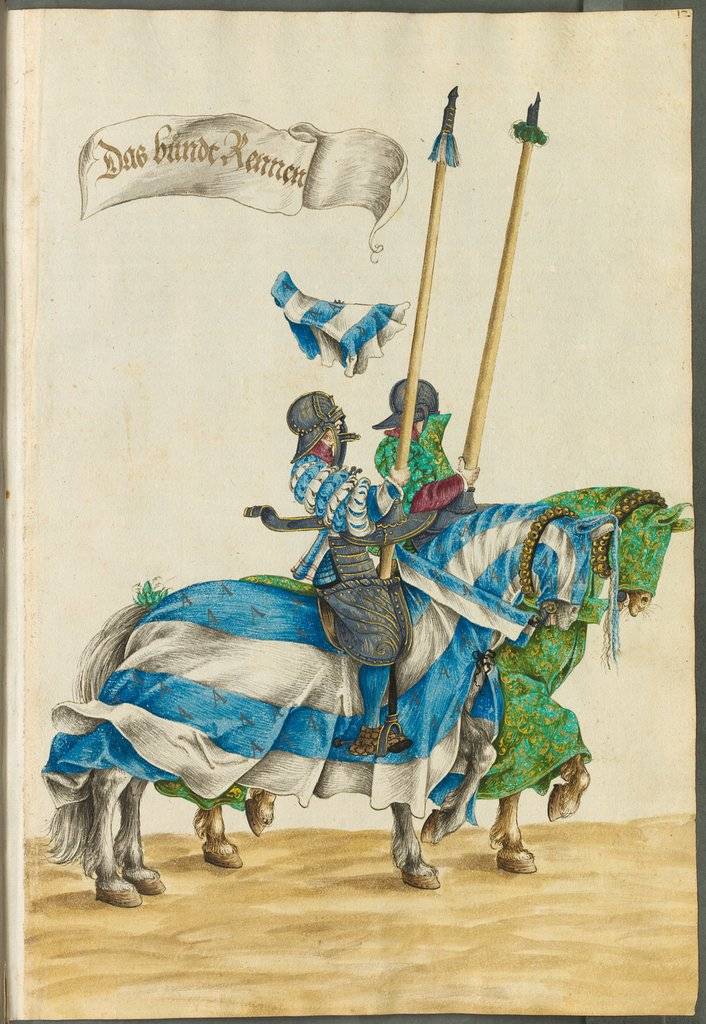
And again, Emperor Maximilian I also spoke in the Bundkiras at the Bundrenn tournament. When the shields were scattered, the courtiers rejoiced, but his participation in such a dangerous competition caused them great concern and caused considerable concern.
The "hard" rennen was the simplest version of the two previous contests. The tarch in it was screwed tightly with one or two screws to the cuirass and did not fly away when hit. The essence of the duel was again to break your spear against the enemy’s tarch and ... that’s all! A knight breaking a spear is declared the winner!
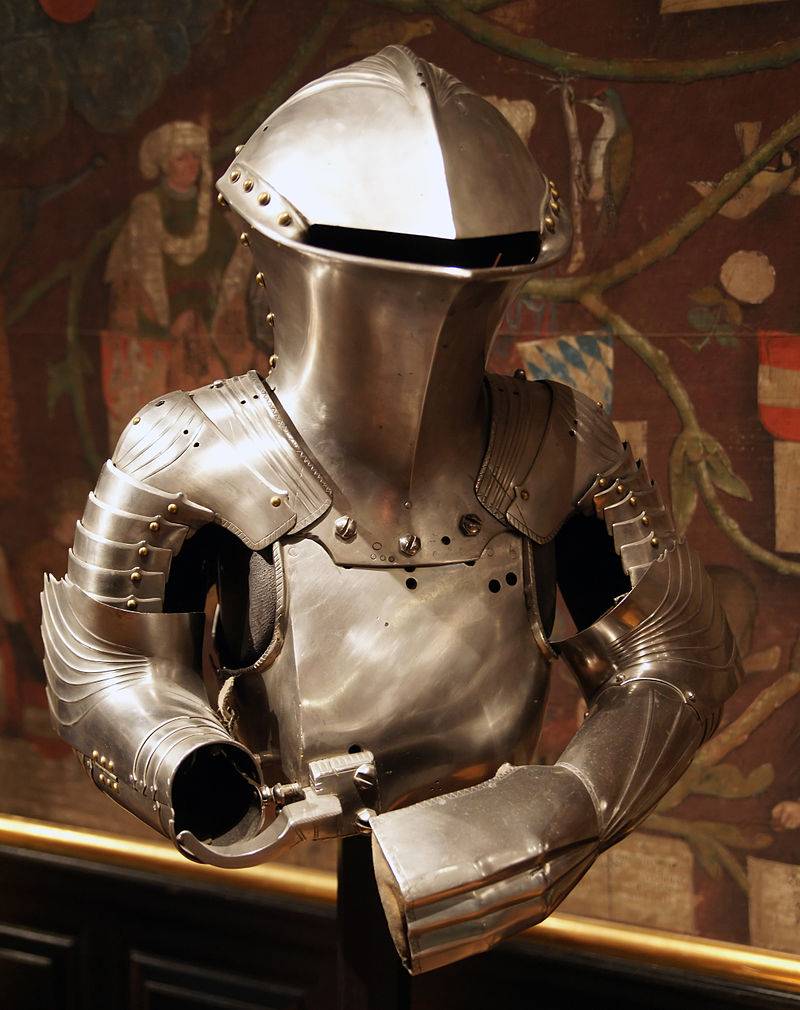
The "mixed" rennen was specially invented for fun. Two knights participated in the duel, but in different armor. One in Stojtzeig, the other in Rennesoig. The one wearing the shtehtsoig had a crown tip on the spear. Wrapped in Rennsoig is ordinary sharp. Horse equipment was appropriate. The goal of the fight was the same - to break his spear on the enemy’s tarch and in addition to knock him out of the saddle.
For the “field” rennen it was necessary to put on full knightly armor so that everyone would look at them and ... again, break the spear. All the difference is to show yourself clad in polished steel.
But the field tournament - it was already a group competition of two squads. That is, everything was exactly the same as in the war. The spear was used combat, not tournament. But the goal was the same - to break the spear. Therefore, knights did not take swords to this tournament with them. However, sometimes the rules stipulated their use. And then, breaking the spear, the tournament participants fought with swords. Dumb, of course, and, apparently, by this time such swords were already made on purpose.
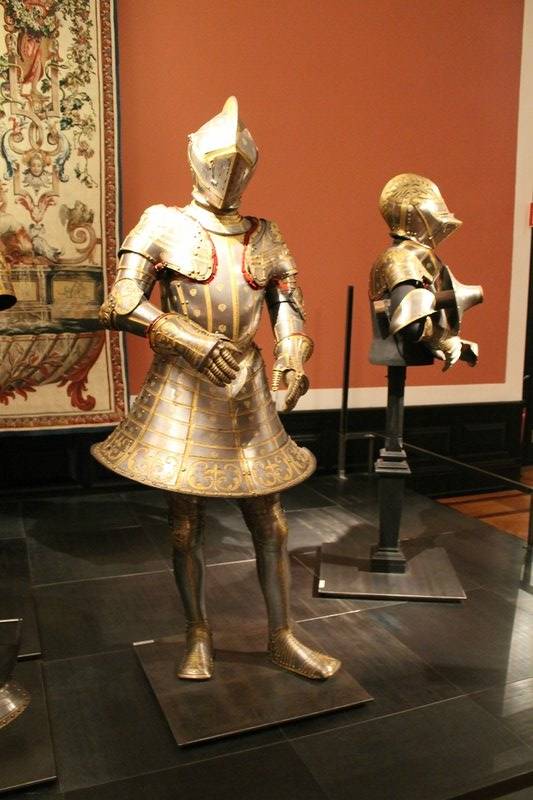
Under Emperor Maximilian I, foot tournaments were also very popular, which also required special armor. Moreover, these armors were so expensive that in fact they became the privilege of only the highest nobility - the dukes and kings. To enter such a tournament in cheap armor was simply indecent. But there were also armor for equestrian competitions, which required at least 2-3, then combat armor, then ceremonial armor ... All this led to attempts to somehow reduce the cost of tournament equipment, but so that it did not affect the spectacle of the fight . So there were competitions with a barrier. The fighters went out into the battlefield in battle armor, but their legs were usually not protected with armor, as the battles were separated by a wooden barrier. The fighters performed, divided into two parties, and fought through it, trying to break the spear of their rival. In this case, the spear, as Landsknechts did, should be held with both hands. Each participant in such a tournament was allowed to break from five to six copies. Well, and, of course, the judges made sure no one struck below the waist.
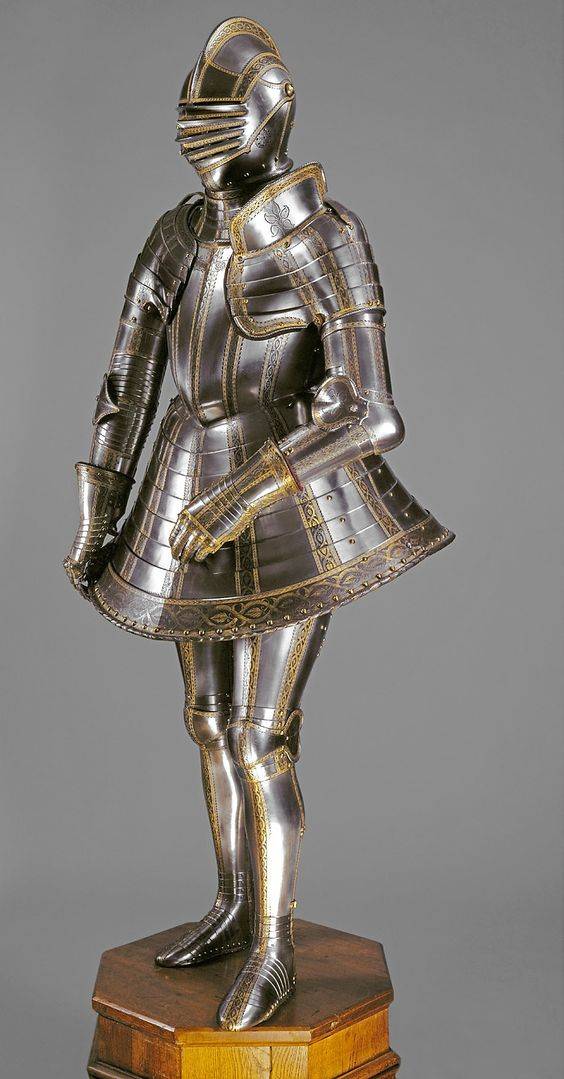
Such tournaments began to be held before the equestrian competitions of the stehn and rennen, in order to give the horse knights the opportunity to prepare their complex equipment for entering the lists. By the middle of the sixteenth century, although there were strong and agile knights who preferred to participate in the stehn and rennen tournaments, and considered them as the only occupation worthy of a knight, an increasing number of representatives of the nobility considered this already as snobbery and preferred foot fights. Do not hesitate to participate in them, demonstrating their luxurious armor to the public, even kings.
The era of the Renaissance was reflected in the tournament art. The Italians did not like the heavy armor for the German tournament, and they were reluctant to follow this northern knightly fashion. Eventually, tournaments according to Italian rules became fashionable. For example, already in the middle of the 16th century, two types became popular: a free tournament, or a “free” rennen, for which ordinary combat armor with only some additional protective elements was used.
For the duel through the barrier, as already reported here, the shtehtsoig was first used. But gradually it was replaced by lightweight Italian armor, in shape approaching military. Around the 1550 year, the armor for this “new” duel through the barrier differed from the combat armor only with a new helmet, only slightly resembling the old “toad head”.
German noblemen, spectators and participants in Italian tournaments gradually abandoned heavy German equipment and increasingly used ordinary military armor equipped with various additional protective parts.
These new armor could be used both in a free tournament and in a duel through a barrier. Thus, considerable savings were achieved, so it is not surprising that they were also most widely used in Germany. Now this armor had nothing to do with the former shtehtsoig. The knight's head was protected by a burgundy helmet arme. Moreover, the tournament helmet was distinguished from the combat helmet by a left-sided reinforcement. A steel German stekhtarch, a little curved from below, was screwed to the left shoulder of the armor. Such patch guards were known before. But then they were smooth so that the tip of the spear slid off them. The new plate was distinguished by a thick diamond-shaped lattice of steel bars. The crown tip of the spear on such a plate could no longer slide, but this is exactly what the creators of the armor sought. Now the blow had to be “sat out" and stay in the saddle at all costs!
Another important element of the new protective equipment was the brace of a sconce with plate gloves (and the left arm was especially good!) And movable leg gaiters.
In the second half of the 16th century, a mixed version of tournament armor came into vogue at the courts of Saxon nobility: a cross between Sttechzeig and Rennzoig. The helmet is the same tournament salad. However, he was attached to the cuirass at the back with the help of a special bracket, which did not allow him to be thrown off his head with a spear strike. For some time, such armor was apparently very popular, and they are called just that - “Saxon tournament armor”. But by the 1590 year, they had gone out of fashion, the battles of two knightly units imitating a battle were practiced even at the beginning of the 17th century.
The author and the administration of the site express their heartfelt gratitude to the curators of the Vienna Armory, Ilse Jung and Florian Kugler for the opportunity to use her photographs.
- Vyacheslav Shpakovsky
- Armor for horse racing. Vienna Armory
Stechzeig for the Gestech from the Vienna Armory
Vienna Armory. Tournament Armor
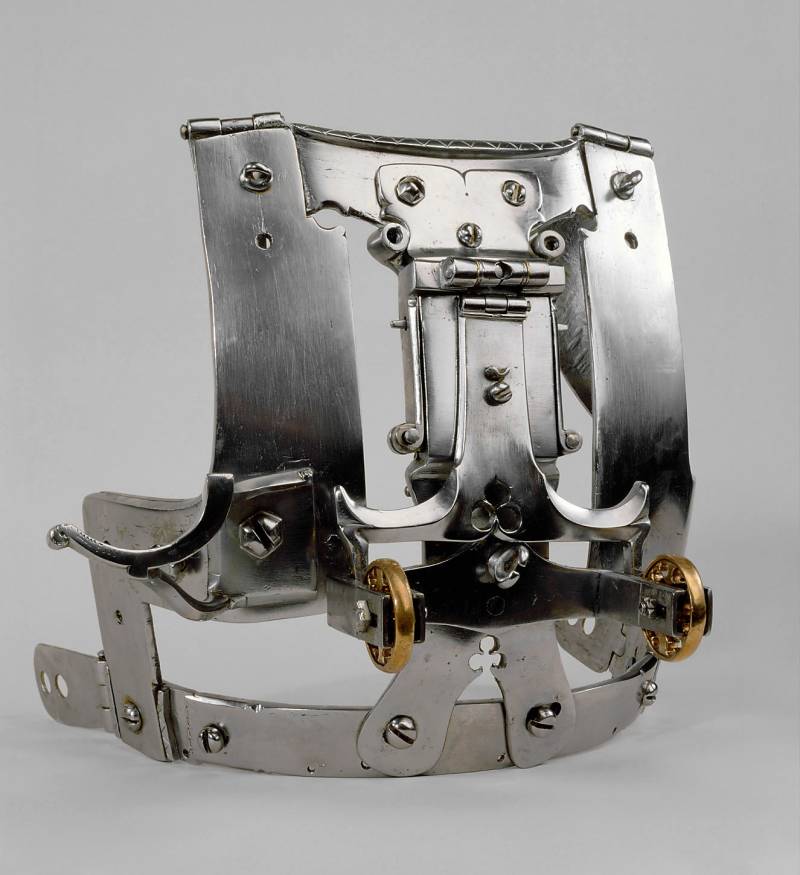
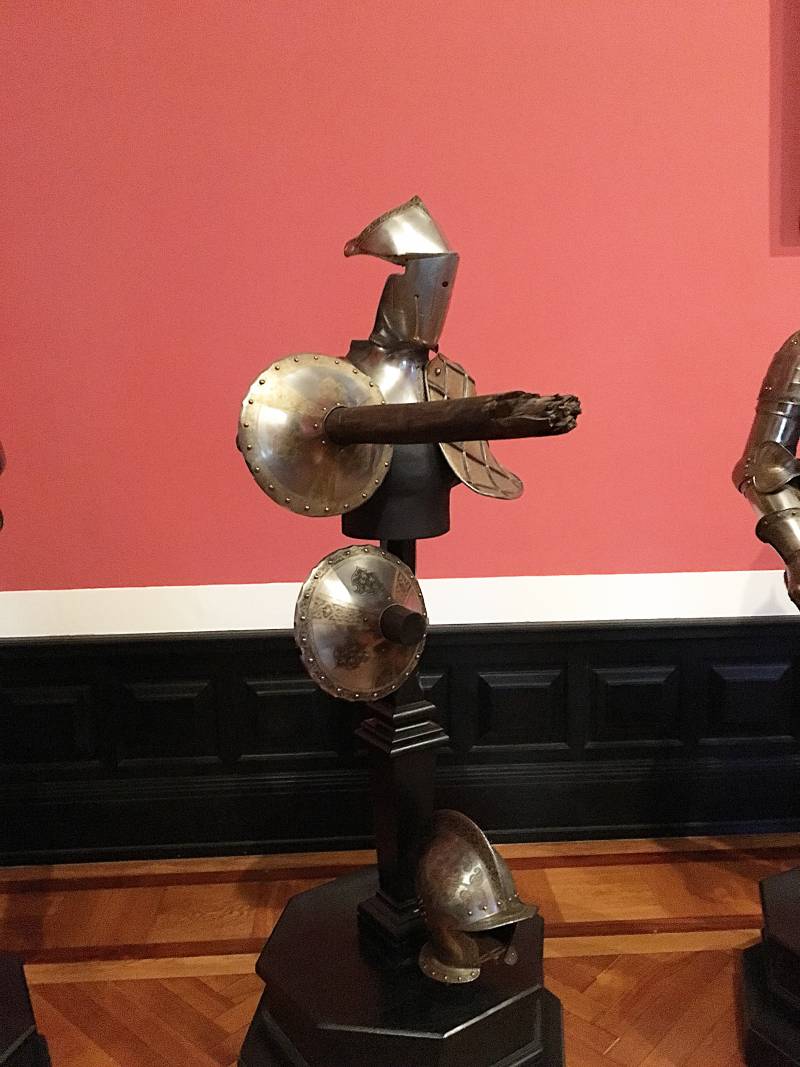
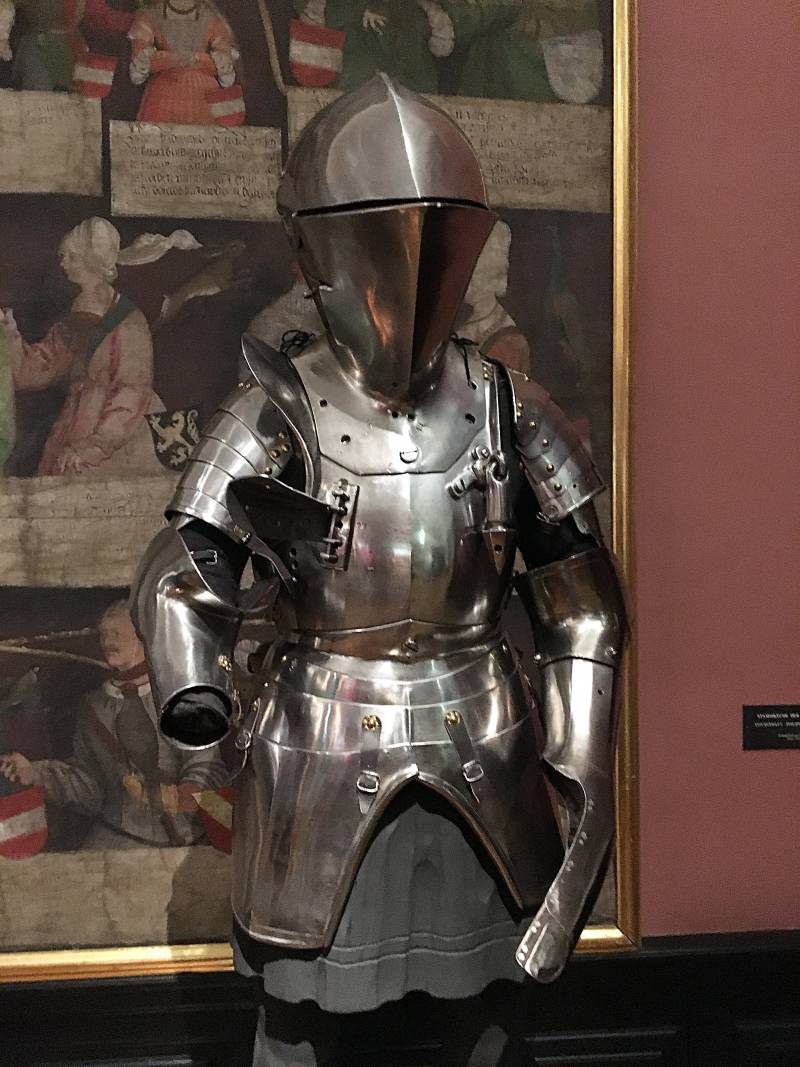
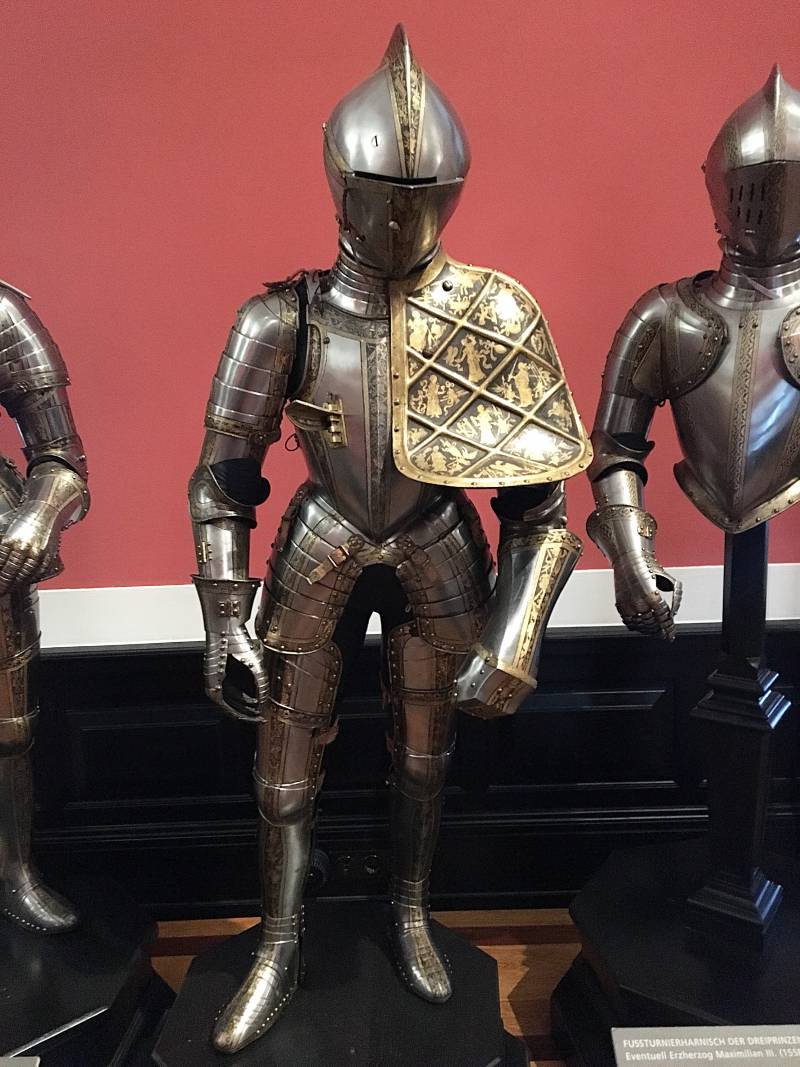
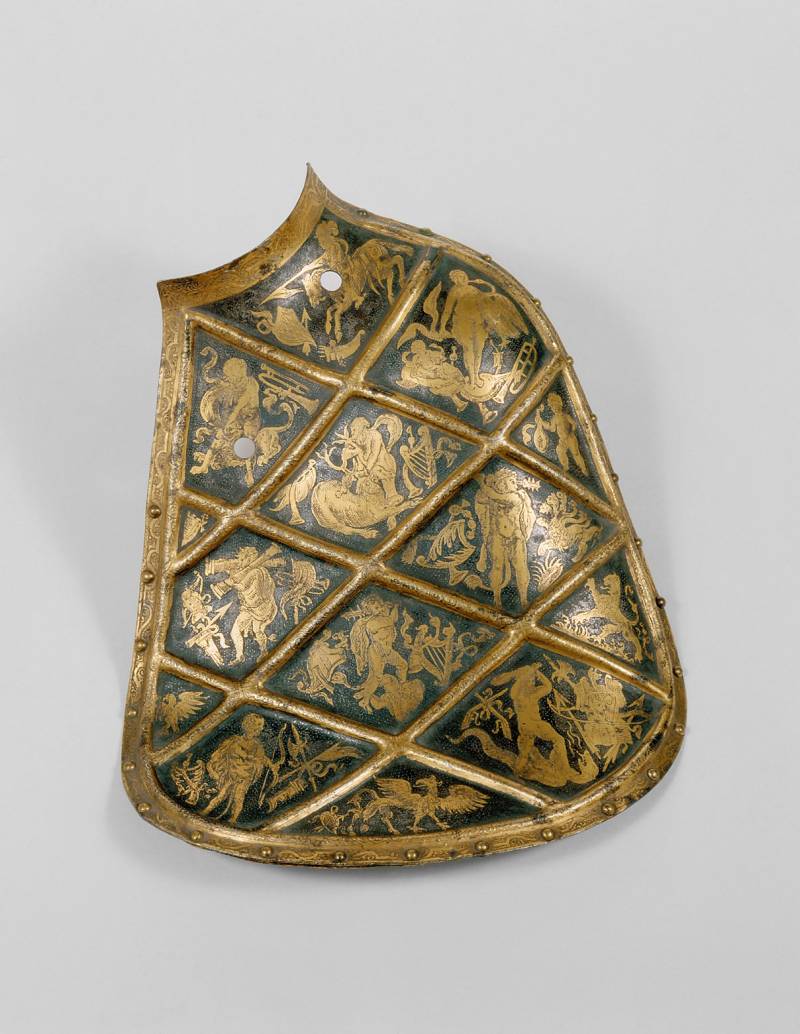
Information